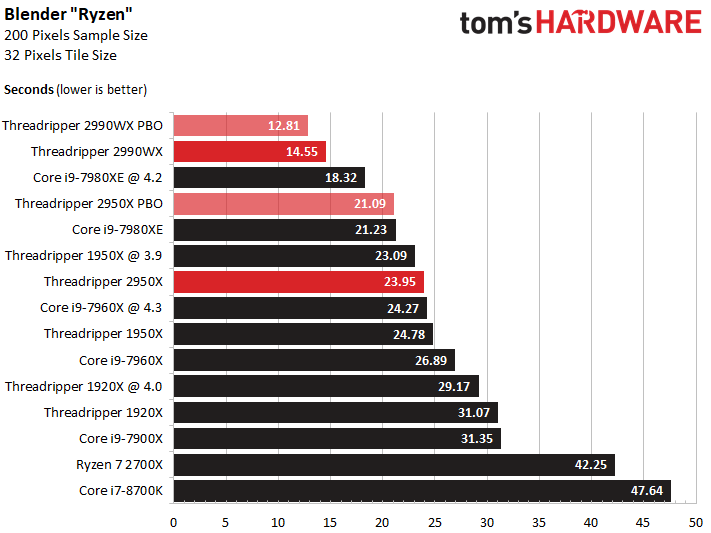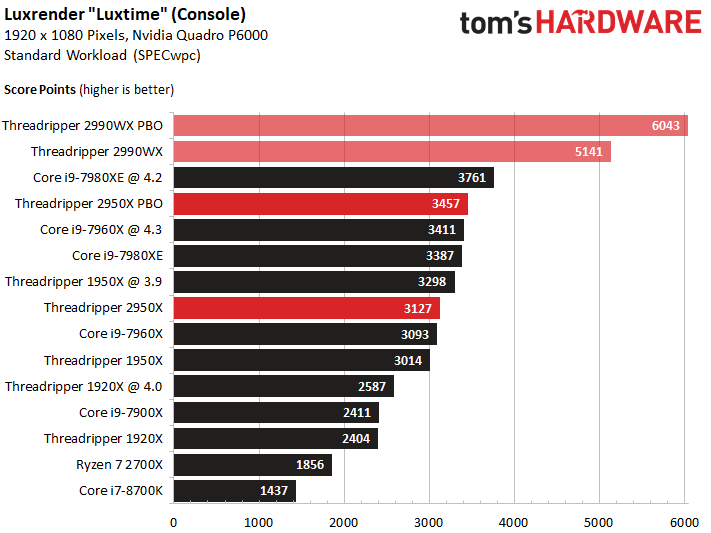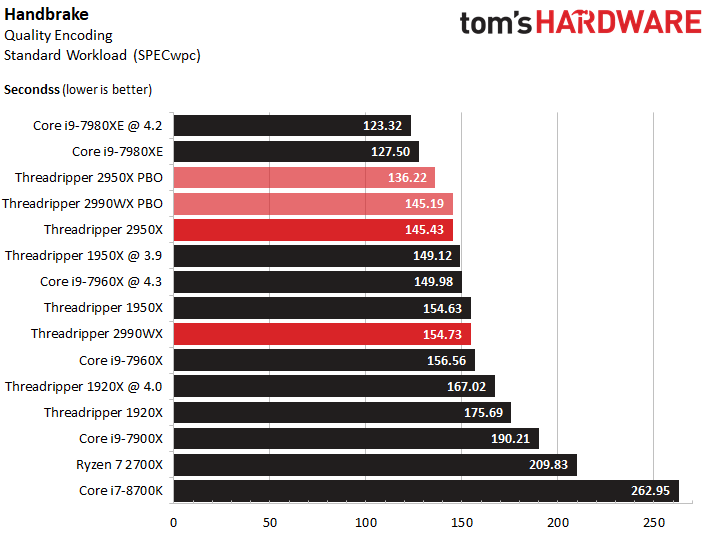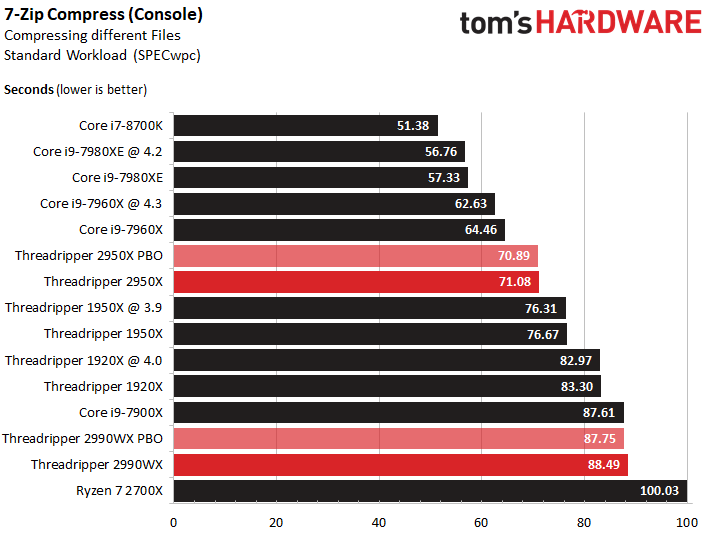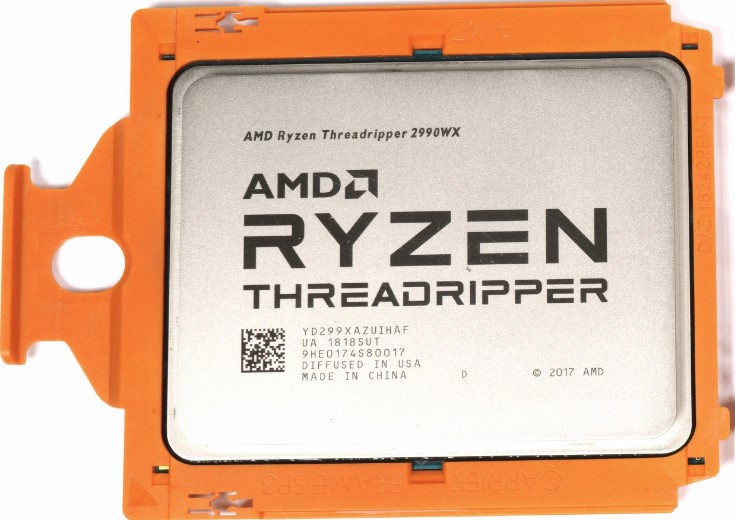Ryzen Threadripper 2 (2990WX and 2950X) Review: AMD Unleashes 32 Cores
Why you can trust Tom's Hardware
Workstation - Compute
Whereas rendering tasks are typically graphics-heavy, favoring CPUs with high clock rates, compute workloads are more up Threadripper's alley. The new 2950X is definitely a step up from AMD's previous-generation Threadripper 1950X. Meanwhile, Ryzen Threadripper 2990WX doesn't always scale well, making it difficult to justify that premium price.
In SolidWorks, for example, Threadripper CPUs failed to impress since our benchmark didn't scale well across available cores. It's also no secret that many applications were compiled and optimized for Intel CPUs, putting AMD at an inherent disadvantage.
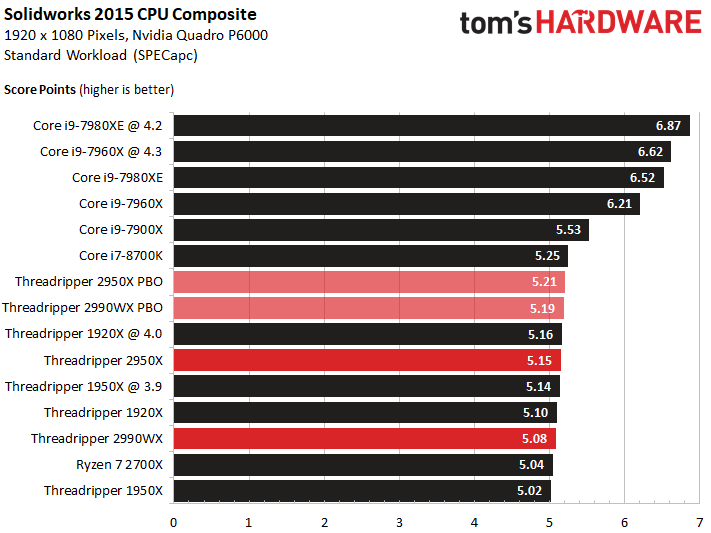
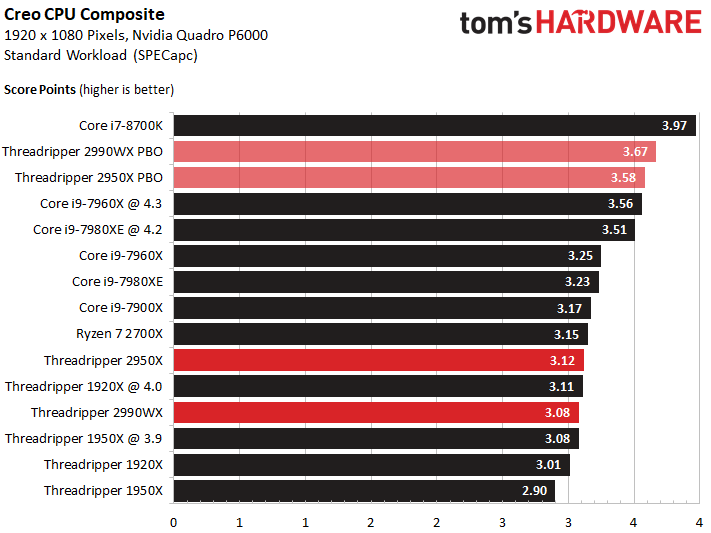
Once we fire up a benchmark that's able to utilize all available processing resources, AMD's Ryzen Threadripper chips take off. The 2990WX carved out a seemingly insurmountable lead, while the 2950X with PBO enabled nudged past Intel's Core i9-7980XE.
The 3ds Max SPECapc workload is now dominated by AMD, which uses physical cores to outmaneuver Intel's mix of real and logical resources. The Ryzen 7 2700X did score a first-place finish thanks to its higher clock rate, though.
Flip over to the pure rendering score and Threadripper 2950X with PBO enabled jumps into first place. There, Ryzen 7 2700X is easily outperformed by multiple Threadripper configurations.
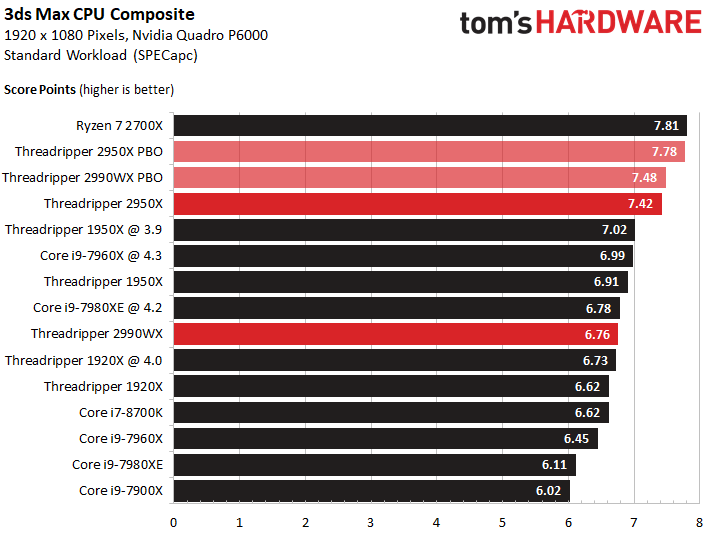
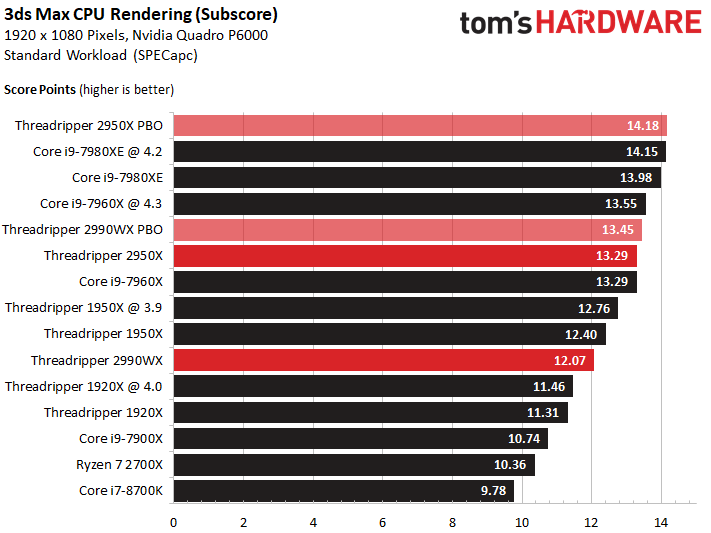
The LuxRender workload from SPECwpc is well-optimized for threading, allowing AMD's Ryzen Threadripper 2990WX to truly shine. Every other model is left in the dust.
HandBrake does scale across multiple cores, but it tops out before the 32C/64T Threadripper 2990WX really takes off. As a result, the flagship Threadripper model loses to AMD's 2950X with PBO enabled.
Get Tom's Hardware's best news and in-depth reviews, straight to your inbox.
7-Zip is similar in that our workload doesn't scale perfectly according to core/thread count. In fact, this benchmark is influenced more heavily by clock rate. Eight threads are usually sufficient, allowing Core i7-8700K to claim a first-place finish.
MORE: Best CPUs
MORE: Intel & AMD Processor Hierarchy
MORE: All CPUs Content
Current page: Workstation - Compute
Prev Page Workstation - Graphics Next Page Cooling, Clock Rates & Power Limits
Paul Alcorn is the Editor-in-Chief for Tom's Hardware US. He also writes news and reviews on CPUs, storage, and enterprise hardware.
-
Rdslw first table is broken 32/64 cores/threads :)Reply
Ryzen Threadripper 2990WX
Ryzen Threadripper 2950X
Socket
TR4
TR4
Cores / Threads
16 / 32
16 / 32 -
philipemaciel Wow, while the 2990WX is a bit of a letdown, the 2950X is a nice surprise. Plenty of bang for your buck!Reply -
alves.mvc Why does Tom's Hardware stopped using the HPC benchmark? It was the most interesting measurement for me that work daily with finite differences and finite elements. Can you return to that?Reply -
totaldarknessincar Seems to me the best of both worlds continue to be Intel's 7900x which sells for $699 at microcenter. You get great gaming performance, and great multithreaded performance, and it's not 12-1800 bucks as some of these mega-threaded cards are.Reply
Despite all the fan-fare, it seems the 7980xe actually remains the best processor when overclocked overall.
Lastly for gaming, it's still 8700K or 8086 as best, with the 2700x from AMD being the best when you factor gaming and some multi-threaded stuff, while being very competitive price wise. -
feelinfroggy777 Very surprising performance from the 2950x. Almost enough to consider parting ways with my 1950x. Maybe when the pricing comes down some from the 2950x in a few months I will consider.Reply
The 2990wx on the other hand is a slight let down. Too bad they could not get the scaling down between the dies like they did with Threadripper 1. But I have read that was going to be an issue. Maybe AMD did not want the 2990wx to cannibalize their Epyc market.
With that being said, the 2990wx is still a modern marvel of technology, even more so when you consider the price. Only couple of years ago a CPU with less than a third of the cores cost just as much.
Competition sure is grand! -
basil.thomas Looks like Intel has an opportunity to bite AMD when they release their 28-core processor. I have a threadripper 2/x399 system but if I upgrade to the 2990wx, I will also upgrade the motherboard and the power supply as well. I think I may wait until the Intel 28 core comes out and see what kind of performance it delivers as I too notice running custom AI apps on the threadripper is barely faster than my old x99/6850 motherboard overclocked @ 4.3Ghz. I want max performance if I am going to pay over $1800 for the flagship which means core wars is just starting...Reply
MOD EDIT: watch your profanity -
ffleader1 Reply
Seem to me that you are mistaking best of both work with jack of all trade. No one who takes rendering seriously would want to sacrifice the performance for gaming. For that price, they may as well grab a 1950X. Sure you lose in gaming, but gain a huge jump in rendering. Also, I don't know about Microcenterbut it's still 1k on Amazon while 1950X is $850. 7900X is like a really really bad choice lol.21228046 said:Seems to me the best of both worlds continue to be Intel's 7900x which sells for $699 at microcenter. You get great gaming performance, and great multithreaded performance, and it's not 12-1800 bucks as some of these mega-threaded cards are.
Despite all the fan-fare, it seems the 7980xe actually remains the best processor when overclocked overall.
Lastly for gaming, it's still 8700K or 8086 as best, with the 2700x from AMD being the best when you factor gaming and some multi-threaded stuff, while being very competitive price wise.
